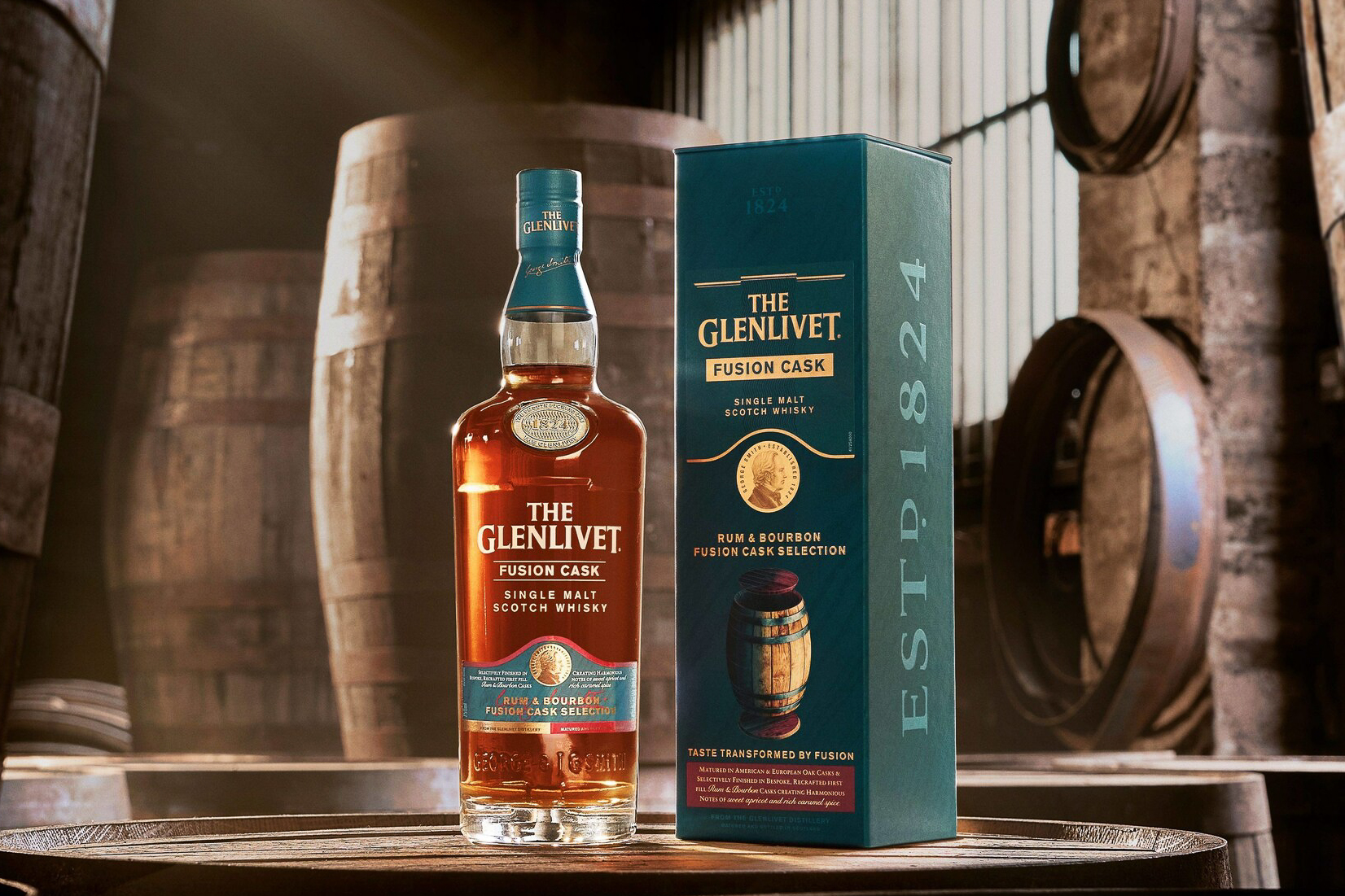The Glenlivet Fusion Cask

In recent years, in the face of an unprecedented boom in Scotch whisky, its producers have been doubling and tripling their efforts to provide us with the highest quality liquor in the greatest possible quantity to meet demand. One of the challenges on the road to full satisfaction - for both producers and consumers - is insufficient access to high-quality barrels. And on one thing all connoisseurs seem to agree. Whisky must age its years in the best possible active casks.
Already at the end of the last century, experiments began with the process of additional maturation, the so-called wood finishing, in which Balvenie, Glenmorangie and Glen Moray took the lead. Notable successes in this field also boasted Bowmore, or the six Diageo distilleries, which around the same time began offering special versions (Distillers Edition) of their whiskies included in the hugely popular Classic Malts of Scotland series, namely Oban, Talisker, Lagavulin, Glenkinchie, Cragganmore and Dalwhinnie. One cannot fail to mention here the pioneering work put into this specific maturation technique by Murray McDavid and personally by Jim McEwan, who joined this independent bottler and owner of the Bruichladdich distillery at the turn of the century.
Today, no one questions the benefits of the process of additional matriculation, and its prevalence seems to prove its effectiveness. Virtually all whisky producers - from the small, fledgling whisky makers to the big corporations - offer a wide range of additionally matured, or as it is popularly known, finished whiskies. Barrels from all sorts of liquor are used for this process, and not long ago regulations introduced by the Scotch Whisky Association allowed a whole range of once-banned barrels to be used by Scotch whisky producers.
Glenlivet Distillery, now one of the largest producers of single malt Scotch whisky, has just introduced a new addition to its range, a whisky subjected to additional maturation in an unusual cask, described by the producer as a "fusion cask." In this case, carefully selected first-fill rum casks and bourbon casks were stripped by coopers, after which new casks were assembled from staves of one type and the other. So we are dealing - according to the manufacturer, for the first time in the history of Scotch whisky - with barrels made from both bourbon and rum seasoned oak.
The Glenlivet Fusion Cask (40% vol.) is a whisky matured using just such innovative casks. Part of the distillate was matured exclusively in bourbon barrels, while part of it was transferred for final maturation to just such fusion cask barrels. The result is a whisky whose bouquet includes, according to the manufacturer's description, notes of orange, vanilla sauce, caramel, coconut and lemon peel. On the taste, we should expect juicy apricots, fresh apples, bananas and toffee and subtle hints of cinnamon.
Glenlivet Distillery, one of the oldest whisky makers in the Speyside region, is celebrating its bicentennial this year. It was founded - actually legalized - shortly after the British Parliament passed a law regulating whisky production in Scotland. The law commonly known as the Excise Act of 1983 introduced not only a new, more lenient taxation system for whisky production, but also a whole series of regulations on the production process itself, defining Scotch whisky for centuries to come. Many of the solutions provided by the regulations of that time are still in force today.
The current offerings of the House of Whisky Online include a wide selection of whiskies from this legendary and distinguished distillery for the Scottish distilling industry. We invite you to visit and keep an eye on the news - who knows, maybe soon the innovative The Glenlivet Fusion Cask will appear at our place too.
[14.02.2024 / photo: The Glenlivet]